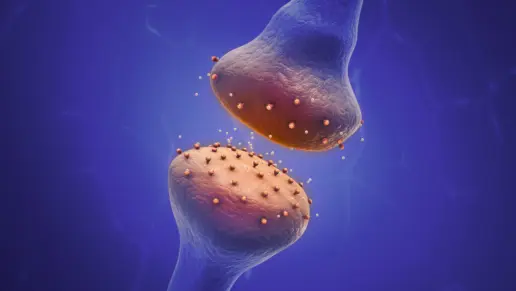What is Dilaudid?
Hydromorphone is an opioid that can treat moderate to severe pain and sedate patients in critical conditions. It’s a prescription painkiller known by the brand names Dilaudid and Exalgo and is also available as a generic.
Your body produces endorphins to control pain. Hydromorphone relieves pain by interacting with the human body’s many opioid receptors the same way that endorphins do. A person taking these medications can still recognize pain but the opioid alters how the brain processes it to reduce any associated emotional and physical distress.
Hydromorphone carries an elevated overdose risk and a strong potential to become addictive. It’s generally prescribed only in circumstances when other medications haven’t helped individuals alleviate their pain.
Dilaudid vs. Morphine
Opioids have a long medical tradition dating back centuries. The poppy plant has historically been used to relieve pain. Opium is derived from this plant, and morphine is opium’s primary active ingredient. Morphine became the first opioid used in clinical practice.
Morphine was extensively used to treat wounded soldiers during the nineteenth century. More people became dependent on opioids so the U.S. government began regulating these drugs by making morphine accessible only through prescriptions. Modern morphine still has a place in medical care for treating severe pain when other alternatives don’t work.
Dilaudid’s chemical structure is similar to morphine but it crosses the blood brain barrier faster so people feel less pain more quickly. It also has a higher bioavailability.
This means that the body absorbs more of the drug than it does morphine. Studies have shown that Dilaudid has a 50% greater absorption rate and has greater potential benefits for controlling pain.
Is Dilaudid Stronger than Morphine?
The short answer is yes. The main difference between morphine and a hydromorphone like Dilaudid is that Dilaudid is 5-10 times more powerful as a painkiller. Hydromorphone can also induce sleep faster and lasts for a shorter time than morphine.
Another distinction is that some individuals metabolize morphine or hydromorphone at different rates.
They may respond better to one medication than the other and need different dosages or experience unique side effects. For instance individuals with asthma or kidney problems may tolerate hydromorphone better.
Keep in mind that both opioids have addictive properties with high overdose and health risks when misused.
FAQs
What is in Hydromorphone?
Hydromorphone hydrochloride is an opioid analgesic and is often abbreviated as hydromorphone HCl. It’s a semi-synthetic opioid artificially derived from morphine and was initially synthesized in 1921.
What are the Side Effects of Hydromorphone?
Hydromorphone side effects can put your life in danger. Adverse effects include physical signs such as dry mouth, blood pressure changes, dizziness, muscle pain and nausea. Urinary retention and constipation are also side effects.
Behavioral side effects can also result. Users may become nervous or anxious, confused or start hallucinating. Some may experience suicidal thoughts or become anorexic as their appetite decreases.
Individuals may fall into a coma or even die as the respiratory system weakens. People with respiratory problems like asthma or COPD or who take medications that depress the central nervous system have elevated risks.
Users who also drink alcohol or have weak liver and kidney function may also be at a high risk.
What is Dilaudid Used For?
The CDC notes that 20.9% of American adults experience chronic pain. Opioid medicines like Dilaudid relieve moderate to severe pain and chronic pain caused by injuries, trauma, surgery, cancer or burns.
Immediate release hydromorphone tends to be used for short term treatment of severe pain that has immediate causes and will heal such as a fall. Extended release alternatives may be used for chronic pain that persists and is unresponsive to other medications.
The World Health Organization considers hydromorphone as among the strongest types of pain management medication. These opioids should be reserved for the more intense cases because they’re some of the riskiest and potent medications a person can get a prescription for.
Despite the risk of dependency, opioids are nevertheless essential medicines for many seriously ill people. Their pain which is caused by organ failures, accidents or advanced cancer is relieved only by medicines like Dilaudid to help them to lead active and pain free lives.
How Long Does Dilaudid Last?
Dilaudid’s pain relieving effects last between four to five hours even if the drug ceases to remain active after two to four hours. Extended release versions which are designed to distribute medication around the body slowly can remain active between 6-13 hours.
The pain relieving effects of hydromorphone take place in the central nervous system. This impact depends on how the medication is taken. For instance hydromorphone takes about 25 minutes to work when taken orally but less than 10 minutes if the drug is snorted, injected through the skin or dissolved under the tongue. The effects take place in less than two minutes if Dilaudid is injected into a vein.
Crushing, chewing or dissolving extended release tablets of hydromorphone can be fatal because an elevated dose can be released too quickly.
Is Dilaudid Addictive?
Dilaudid is addictive. Hydromorphone is a DEA Schedule II substance due to its potent addictive properties that can create dependence. SAMSHA data shows that 223,600 Americans misuse hydromorphone prescriptions yearly.
The misuse of prescription medications comes from many reasons. Some people take more than prescribed to alleviate their pain while others take them without a prescription to get high or for other non-medical reasons.
The chronic misuse of hydromorphone affects neurons in the brain. Opioids calm neurons and as more opioids are consumed the brain produces more excitatory neurons to compensate for those that have been artificially relaxed. If a person stops taking opioids then this excess of excitatory neurons produces physical withdrawal symptoms like anxiety, nervousness and muscle cramps.
The more users consume Dilaudid or another hydromorphone the more they become accustomed to its effects. A person may be caught in a vicious cycle where they become dependent on increasing doses of opioids to recapture their initial highs. Many opioid addicts consume dangerously high doses without experiencing a strong effect due to their bodies’ tolerance but they keep using them to avoid withdrawal symptoms.
Can You Overdose on Dilaudid?
Overdoses on opioids like Dilaudid happen far too often. The CDC notes that from 1999-2020 almost 500,000 Americans died due to opioid overdoses. Another study states that more individuals die from opioid overdoses than gun violence and drunk driving combined.
Hydromorphone may produce respiratory depression because it disrupts the brain regions responsible for controlling breathing functions. A high dose of Dilaudid can impair the capacity to breathe and may lead to a reduction in blood pressure and heart rate which can result in a coma and even death.
Dilaudid overdose symptoms include physical conditions like cold skin, a bluish discoloration on lips and fingernails, excessive constriction or dilation of the pupils and muscle weakness. A person who has overdosed may be prone to fainting or have trouble breathing.
Their pulse may also be weak along with a low heart rate or blood pressure. Additional behavioral signs can include extreme somnolence or abnormal snoring and slurred speech.
Combining Dilaudid with other substances that impact respiratory function such as alcohol, allergy medication and other opioids can heighten the risk of overdose.
Stopping Dilaudid without medical support is dangerous because you can experience detrimental withdrawal symptoms.
What is MAT?
Medication assisted treatment (MAT) is a form of addiction treatment that uses mental health therapies and medications approved by the FDA to treat opioid use disorders. MAT is designed to ease withdrawal symptoms and manage cravings.
Hydromorphone’s withdrawal symptoms tend to resemble influenza. You can get runny noses, muscle pains and insomnia. Users may also have elevated heart rates and blood pressure. Users may become agitated and experience depression.
MAT helps people stabilize and prevents any withdrawals. You’ll be more willing to work with trained therapists to identify underlying reasons for your dependency and develop plans to address these mental health issues and remain sober.
Signs and Symptoms of Dilaudid Addiction
Only a qualified professional can diagnose Dilaudid addiction. Seek medical help if you show signs and symptoms of Dilaudid misuse. These can include uncontrollable cravings or needing to take larger doses to achieve the same effects.
Users who also take more than prescribed or for longer periods or spend a lot of time thinking about getting and using Dilaudid may also need professional assistance.
Individuals who see a change in their lifestyle because of hydromorphone use might also have a dependency. If you have stopped doing things you loved because of opioids. Work and personal responsibilities are also often negatively impacted by opioid use.
If you or a family member have had problems with alcohol or drug abuse before, you may be at an increased risk of Dilaudid abuse.
Please tell your doctor about your personal and family history of substance abuse.
Finding Help for Dilaudid Addiction
There are alternatives to recover from Dilaudid addiction. Here are some of them.
Detox
Detox is a medical process where clinicians help individuals manage opioid withdrawal symptoms safely after discontinuing Dilaudid use. The process often takes place in specialized facilities that offer round the clock monitoring for a safe experience.
Medications are also employed if needed to manage withdrawal symptoms and minimize distress.
Inpatient
Inpatient programs provide individuals battling Dilaudid addiction a safe space to focus full-time on their recovery. You’ll access evidence-based treatments to address past trauma and meet peers invested in a healthy lifestyle. This allows you to master skills and maintain a sober life.
Outpatient
Outpatient programs offer part-time services to support recovery from Dilaudid addiction.
While holding a job or living at home you can also access group and individual therapy and learn life skills to gain accountability to get and remain sober. In some outpatient facilities clinicians may prescribe medication that can help you minimize withdrawal symptoms and urges if necessary.
MAT
Medication assisted treatment (MAT) can be a valuable option to combat Dilaudid dependency.
In these programs clinicians use medications like Suboxone to reduce opioid cravings and other prescriptions in conjunction with psychotherapy to address the roots of addiction and achieve long term sobriety.
Aftercare
Long term freedom from opioids requires daily efforts. Aftercare programs acknowledge that temptations happen and triggers exist. These programs equip you with group therapy and accountability to increase the chances of sustainable sobriety even after you graduate from a program.
Abusing Dilaudid can be destructive to your life but it’s never too late to start over. Take the first step today and begin building your tomorrow.
Addiction Centers That Treat Opioid Addiction
Finding facilities near you…





